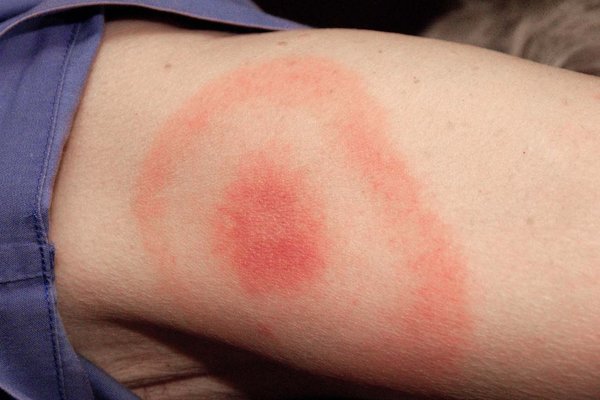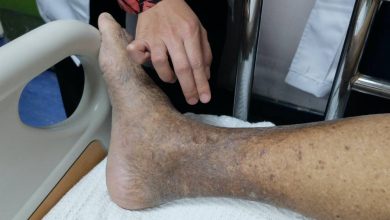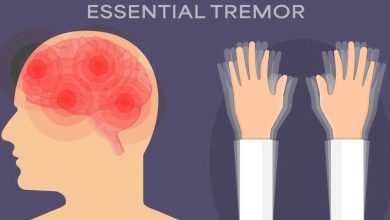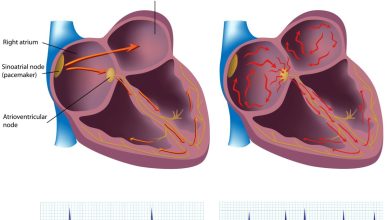Lyme Disease Symptoms, Causes, Diagnosis and Treatment

What Is A Lyme Disease?
Lyme disease is a bacterial infection which results due to an infected tick bite. The bite leaves a rash on the area where the tick had bitten and in most cases the rash resembles the shape of a bull’s eye. However, scientists and medical experts state that around 25% of the victims do not get a rash after the bite. Since a rash is not always necessary, victims must look out for other symptoms if they are in a doubt whether or not they have been infected by the Lyme disease. The Lyme disease is not dangerous if a person immediately seeks medical advice without a delay.
What Are The Alternate Names Of Lyme Disease?
Lyme disease is also known by the following names:
- Bannwarth syndrome.
- Borreliosis.
Lyme Disease Symptoms
Lyme disease is a growing health concern across many parts of the world, especially in North America and Europe. It is caused by the bacterium Borrelia burgdorferi, typically transmitted to humans through the bite of infected black-legged ticks, often called deer ticks. One of the major challenges with this condition is that Lyme disease symptoms can vary widely and mimic those of other illnesses, making diagnosis difficult if not detected early.
In this article, we’ll take a closer look at the key Lyme disease symptoms, how they develop over time, and what you should do if you suspect you’ve been infected.
What Are the Early Lyme Disease Symptoms?
The initial stage of Lyme disease usually begins within 3 to 30 days after a tick bite. Early symptoms often resemble the flu and may be mild, which is why they can be overlooked. Common early Lyme disease symptoms include:
- Fever and chills
Low-grade fever and chills are often among the first signs, though not everyone experiences them. - Fatigue
Unexplained tiredness is a hallmark of Lyme disease, even in the early stage. - Headache
Persistent, dull headaches may occur and are sometimes mistaken for tension headaches. - Muscle and joint aches
These aches can move from one area to another, and often mimic symptoms of other conditions such as fibromyalgia. - Swollen lymph nodes
The immune system’s response to the infection can lead to swollen glands, particularly around the neck and groin. - Erythema migrans rash (bull’s-eye rash)
This is the most well-known of the Lyme disease symptoms, appearing in about 70-80% of infected people. The rash starts at the site of the tick bite and gradually expands, often with a central clearing that gives it a target-like appearance.
Lyme Disease Symptoms in the Second Stage (Disseminated Infection)
If Lyme disease is not treated early, the bacteria can spread to other parts of the body within weeks or months. This second stage is known as early disseminated Lyme disease. Symptoms become more serious and widespread. Key Lyme disease symptoms at this stage include:
- Multiple rashes
New rashes may appear on other areas of the body, often less distinct than the original one. - Severe joint pain
Intermittent or chronic arthritis-like symptoms, especially in large joints such as the knees, may develop. - Neurological problems
These can include numbness, tingling, facial palsy (drooping on one or both sides of the face), and even meningitis-like symptoms such as neck stiffness and light sensitivity. - Heart issues (Lyme carditis)
In some cases, Lyme disease can affect the heart, leading to irregular heartbeat, chest pain, or shortness of breath. - Dizziness or shortness of breath
As the bacteria spreads, some people report feeling lightheaded or having trouble catching their breath.
Late-Stage Lyme Disease Symptoms
Late-stage Lyme disease, also known as chronic Lyme disease or late disseminated Lyme disease, may develop months or even years after the initial infection, especially if left untreated. Common Lyme disease symptoms at this stage include:
- Chronic joint inflammation
Persistent arthritis, especially in the knees and other large joints, may occur. This can become debilitating over time. - Cognitive problems (Lyme brain)
Many individuals report memory loss, difficulty concentrating, or mental fogginess—often described as “brain fog.” - Sleep disturbances
Insomnia and disturbed sleep patterns can be long-term issues for some patients. - Mood disorders
Depression, anxiety, and irritability have been reported, possibly due to the long-term impact of the infection on the nervous system. - Peripheral neuropathy
Numbness, tingling, or pain in the hands and feet may develop as the nervous system becomes increasingly affected.
What Causes A Lyme Disease?
The bacteria named borrelia burgdorferi are responsible for causing Lyme disease. Blacklegged and certain species of ticks serves as the basis to carry the bacteria. When a tick bites an infected deer or mice, it takes up the bacteria B. burgdorferi. It then transmits the bacteria to people through a bite, causing Lyme disease.
What Are The Risk Factors Of Lyme Disease?
The probability to develop Lyme disease increases if:
- A person is wearing clothes that expose too much skin. This means that if he walks in an area where ticks are common, the chance of being bitten is high.
- A person roams around in a wooden or grassy area. These are the places where the tick-laden animals usually dwell and therefore infected ticks are found in such places.
- Having a pet animal that can transport the infected tick home.
How Is Lyme Disease Diagnosed?
It is normal to see a medical expert even if symptoms show up to confirm whether or not a person is victimized by Lyme disease. Therefore, tests like
- Western blot test.
- MRI (of brain).
- ELISA and
- PCR tests are seen as reliable by experts.
How Is Lyme Disease Treated?
Lyme disease is a disease that can efficiently be cured by using antibiotics. Doctors claim that the sooner the treatment begins, the faster will be the result. Certain oral and intravenous antibiotics usually cure Lyme disease, though, not necessarily. Bismacine is seen as an alternative by medicinal practitioners.
By : Natural Health News




